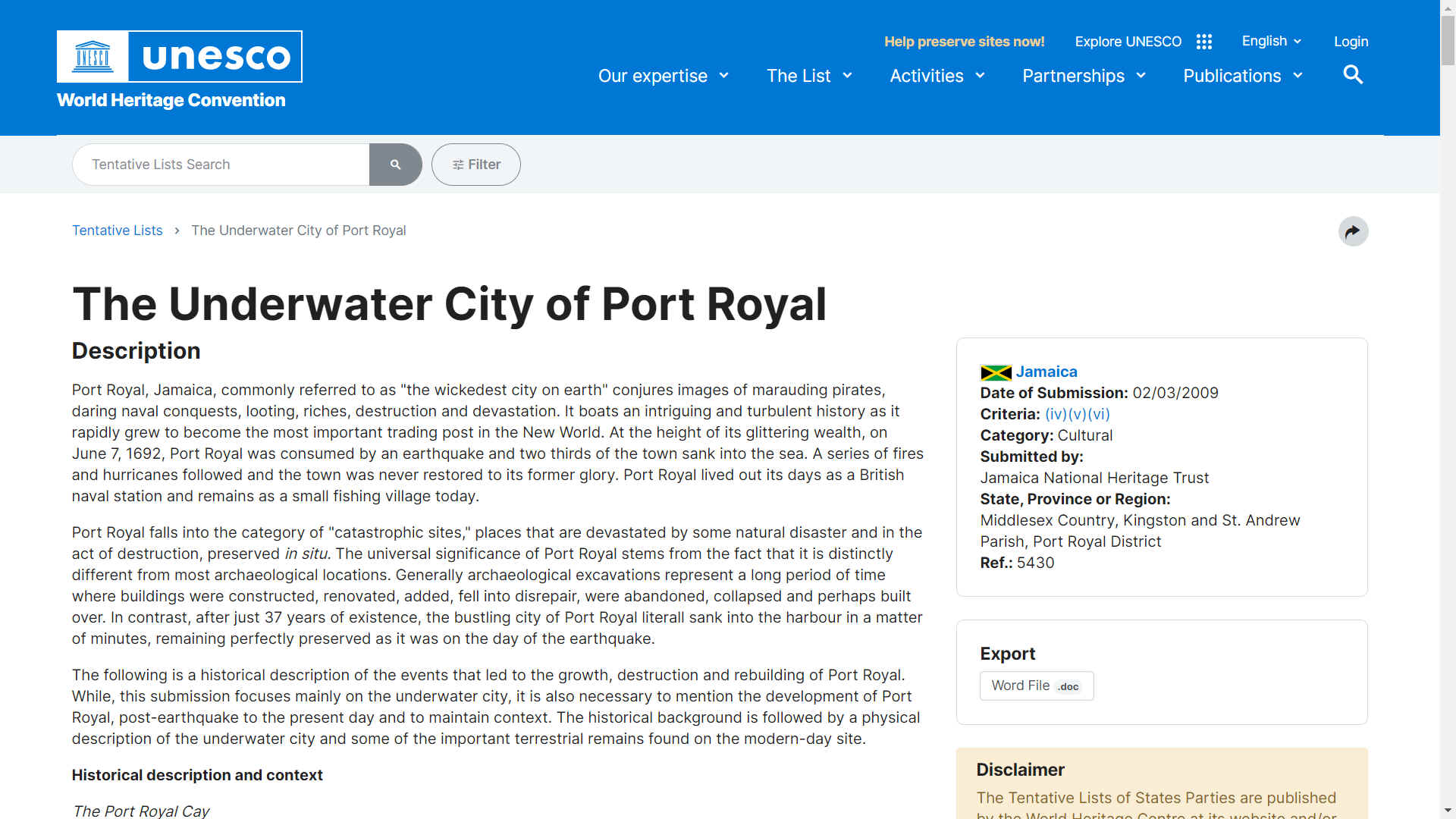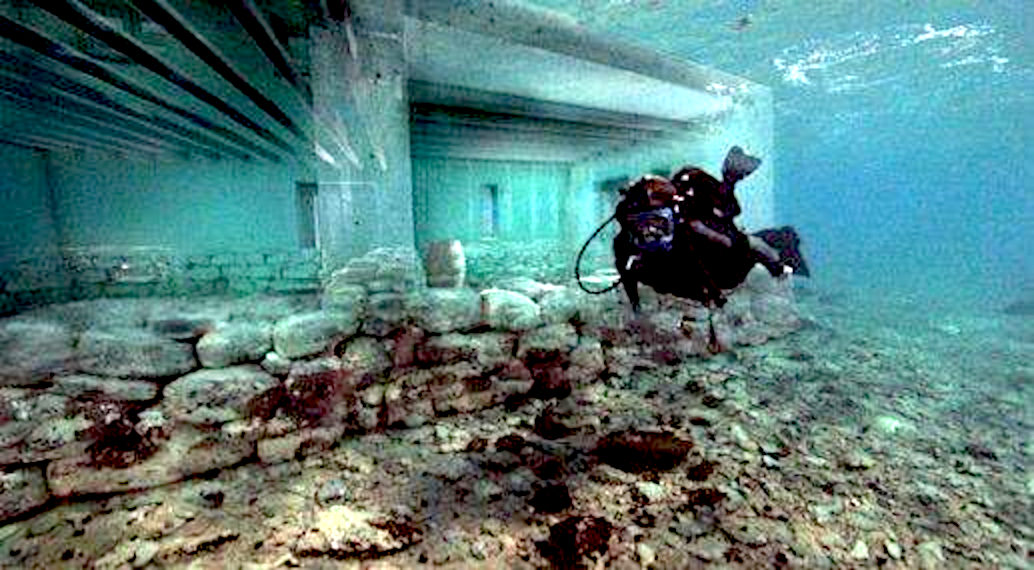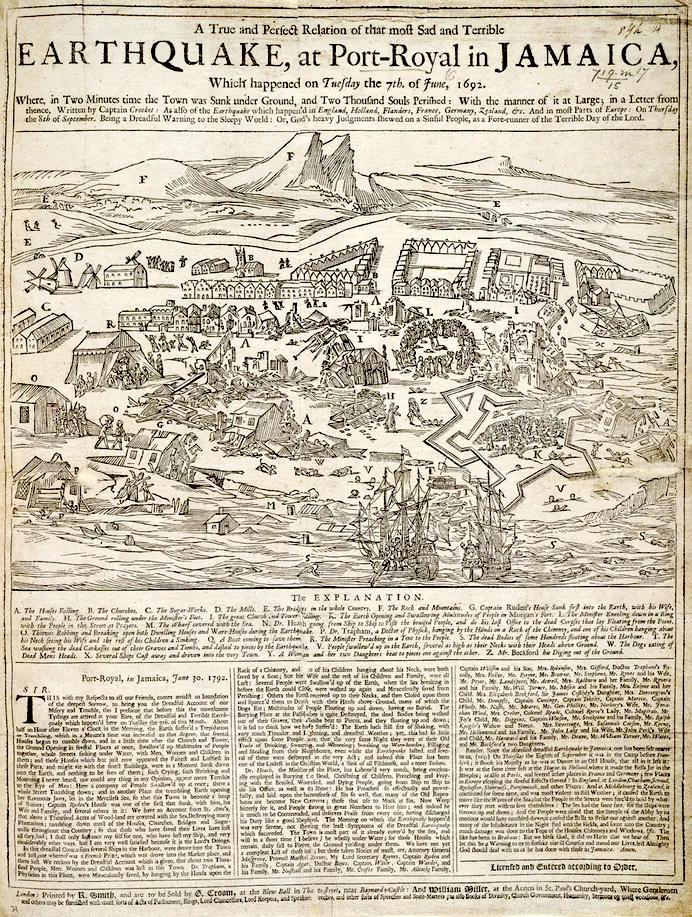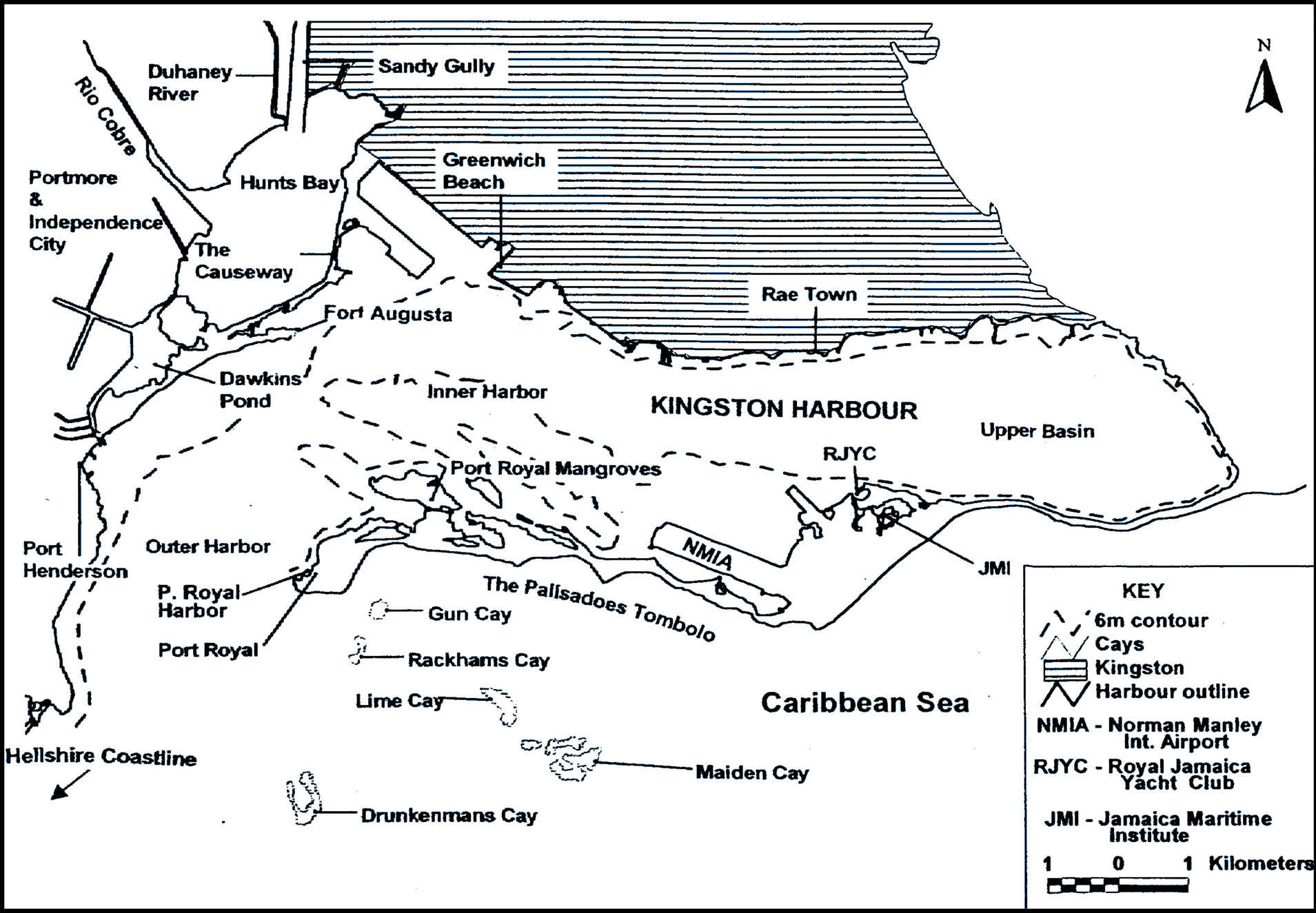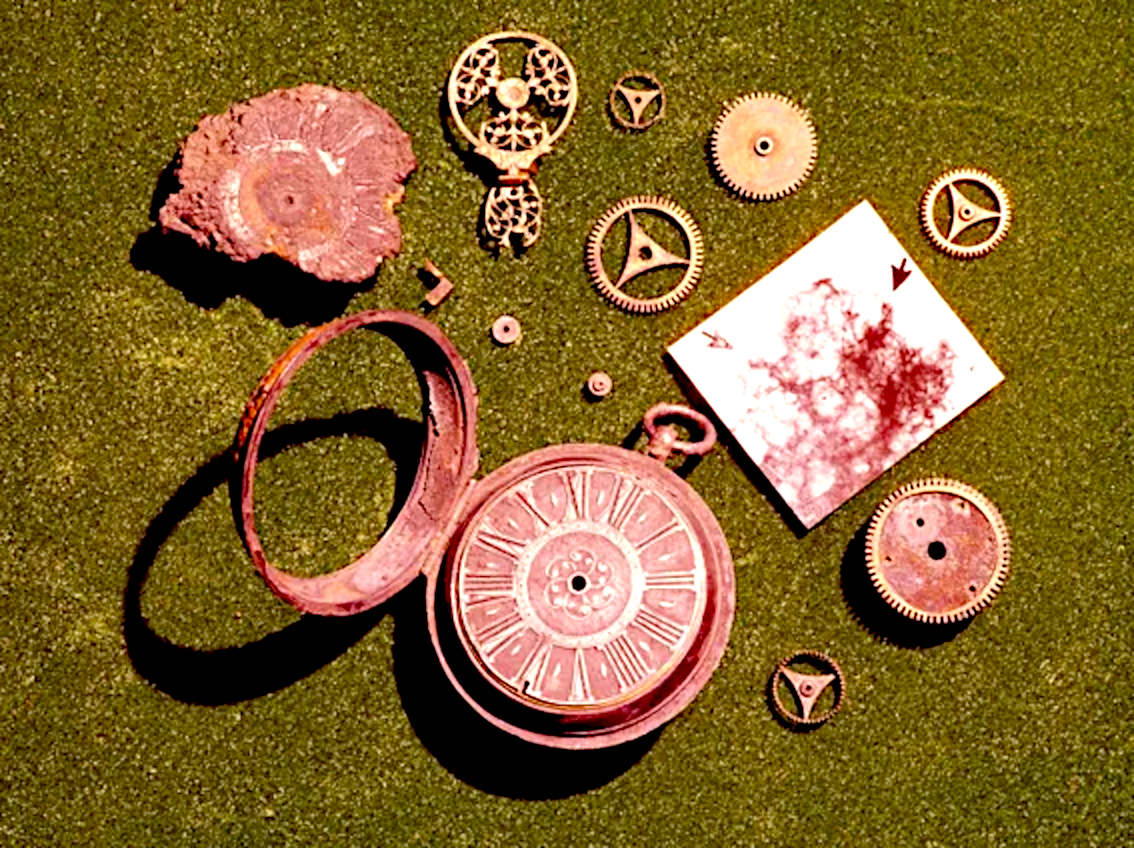|
1859 EXCAVATIONS @ PORT ROYAL
Please use our A-Z INDEX to navigate this site or see HOME
|
Jeremiah Murphy’s diving career and adventures spanned almost the entire second half of the 1800s, and took him not just to nearby reefs and islands like Silver Shoals and the
Bahamas.
In
1859 he located the remains of Fort James, old Port Royal, using a
diving bell.
Jeremiah married into the Manuel family with ties to Bermuda. He was buried with his wife, brother, two sons and a daughter in St. Thomas’s churchyard. His memorial reads: "In loving memory of Jeremiah Denis Murphy. Born at Courtmasherry, Co. Cork, Ireland March 21 1832. Died at Grand Turk Turks Islands, Sept 21, 1895."
A
diver using SCUBA gear to explore Port Royal
Captain Sir Henry Morgan was a pirate, and privateer, ending up as the Governor of Jamaica. He was buried at Palisadoes Cemetery, then Port Royal was washed into the Caribbean Sea, the result of an earthquake and tsunami in 1692. Not to be seen again for 300 years.
UNDERWATER
ARCHAEOLOGY EXCAVATION IN PORT ROYAL
1960:
Norman Scott explored Fort Carlisle.
1969 - 1970: Philip Mayes Excavation. Mayes was hired by the Jamaican National Trust Commission to continue research. Mayes is accredited with uncovering St. Paul’s Church of Port Royal, the largest building of the 17th century city.
Port Royal mangroves: Hurricane Refuge lagoon, Fort Rocky lagoon and Cemetery lagoon.
An
earthquake in the Caribbean
struck Port Royal, Jamaica, on
the 7th of June 1692. A stopped pocket watch found in the harbor during a 1959 excavation
conducted by Edwin
Link and his wife Marion, indicated that the resultant tsunami occurred around 11:43 AM local time.
|
Port Royal is a contender for World Heritage Site listing to become a landmark or area with legal protection by an international convention administered by the United Nations Educational, Scientific and Cultural Organization (UNESCO). World Heritage Sites are designated by UNESCO for having cultural, historical, scientific or other form of significance.
|
|
A timepiece was recovered from the sands at old Port Royal, with the exact moment recorded, when the wearer was taken by the tsunami, as being 11:43 on the 7th June 1692.
LINKS & REFERENCE
http://www
|
|
Please use our A-Z INDEX to navigate this site, or return HOME
|
|
This website is Copyright © 2022 Cleaner Ocean Foundation & Jameson Hunter - All rights reserved
|
